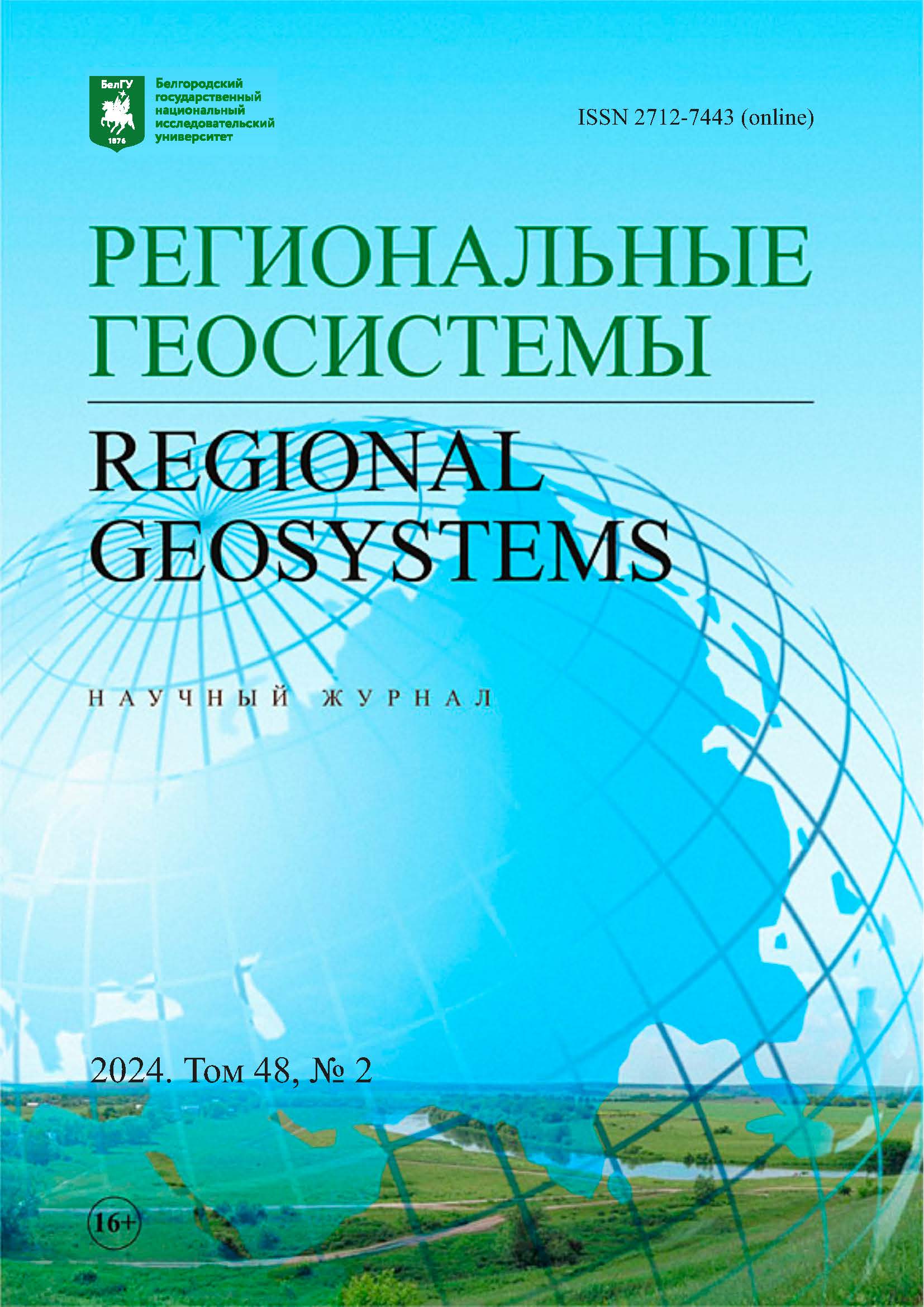Provision of Public Transport Belgorod Agglomeration as the Factor of Sustainable Development
DOI:
https://doi.org/10.52575/2712-7443-2024-48-2-162-173Keywords:
residential area, sustainable development, sprawl, accessibility of public transport, motorization of the urban environment, passenger turnover, transport mobilityAbstract
The article conducted a study of the city of Belgorod and its suburbs regarding the provision of residential territories with public transport routes. The purpose of the article is to reflect the current situation of public transport in different parts of Belgorod residential area and zoning this residential territory according to the degree of involvement in the city’s route network. The objective of the study is to map public transport routes and compare the number of routes passing through a specific residential area in order to assess the degree of involvement of this area in the city’s route network. The number of routes determines the possibility of moving to different parts of the city and suburbs. Parallels between the sprawl development of the suburbs of American cities and the modern development of the private sector in Belgorod are given. The shortcomings of the formed residential development from the point of view of sustainable development and greening of the settlement are identified. Maps of the route network of the city's public transport have been compiled; the thematic map reflects the intensity of bus traffic on different sections of the road network. An assessment of the influence of population density on the degree of provision of bus routes for citizens is made. The residential area of the city was zoned according to the degree of accessibility by public transport. The size of the population living in conditions of varying degrees of accessibility to public transport has been determined. Territories with a high degree of public transport can be considered more consistent with the concept of sustainable development. About 23.1 % of the city's population lives with low or below average access to public transport.
Downloads
References
Гришаева Ю.М., Матанцева О.Ю., Спирин И.В., Савосина М.И., Ткачева З.Н., Васин Д.В. 2018. Устойчивое развитие транспорта в городах России: опыт и актуальные задачи. Юг России: экология, развитие, 13 (4): 24–46. https://doi.org/10.18470/1992-1098-2018-4-24-46.
Дорохов Р.А., Синицын Н.А. 2020. Спрол в России: рост и структурная трансформация пригородов Белгорода. Известия Российской академии наук. Серия географическая, 84(2): 191–206. https://doi.org/10.31857/S2587556620020053.
Зубаревич Н.В. 2010. Города как центры модернизации экономики и человеческого капитала. Общественные науки и современность, 5: 5–19.
Нотман О.В. 2021. Концепция 15-минутного города как основа устойчивой модели развития мегаполиса в условиях современных рисков. Урбанистика, 3: 73–85. https://doi.org/10.7256/2310-8673.2021.3.35086.
Разенков П.И., Корнилов А.Г. 2023. Дифференциация плотности населения в пределах крупного города для выявления уровня антропогенной нагрузки (на примере Белгорода). Известия Саратовского университета. Новая серия. Серия: Науки о Земле, 23(3): 168–175. https://doi.org/10.18500/1819-7663-2023-23-3-168-175.
Разенков П.И., Лопина Е.М., Шульгин В.М., Жидких Д.В. 2021. Функционально-планировочное зонирование города как инструмент социально-экономического развития и геоэкологической оценки. Московский экономический журнал, 10: 73–86. https://doi.org/10.24412/2413-046Х-2021-10629.
Трейвиш А.И. 2016. Сельско-городской континуум: судьба представления и его связь с пространственной мобильностью населения. Демографическое обозрение, 3(1): 52–70. https://doi.org/10.17323/demreview.v3i1.1763.
Чугунова Н.В., Полякова Т.А., Лихневская Н.В. 2013. Развитие системы городского расселения Белгородской области. География и природные ресурсы, 1: 112–118.
Чугунова Н.В., Полякова Т.А., Морковская Д.Н., Ткачев Е.В. 2023. Поляризация пространства староосвоенного региона как фактор «сжатия». На материалах Белгородской области. Региональные геосистемы, 47 (2): 226–237. https://doi.org/10.52575/2712-7443-2023-47-2-226-237.
Anas A., Lindsey R. 2011. Reducing Urban Road Transportation Externalities: Road Pricing in Theory and in Practice. Review of Environmental Economics and Policy, 5(1): 66–88. https://doi.org/10.1093/reep/req019.
Cervero R. 2014. Transport Infrastructure and the Environment in the Global South: Sustainable Mobility and Urbanism. Jurnal Perencanaan Wilayah dan Kota, 25(3): 174–191. https://doi.org/10.5614/jpwk.2015.25.3.1.
Donchenko V., Kunin Y., Ruzski A., Barishev L., Trofimenko Y., Mekhonoshin V. 2016. Estimated Atmospheric Emission from Motor Transport in Moscow Based on Transport Model of the City. Transportation Research Procedia, 14: 2649–2658. https://doi.org/10.1016/j.trpro.2016.05.423.
Garau C., Masala F., Pinna F. 2016. Cagliari and Smart Urban Mobility: Analysis and Comparison. Cities, 56(1): 35–46. https://doi.org/10.1016/j.cities.2016.02.012.
Moreno C., Allam Z., Chabaud, D., Gall C., Pratlong F. 2021. Introducing the “15-Minute City”: Sustainability, Resilience and Place Identity in Future Post-Pandemic Cities. Smart Cities, 4(1): 93–111. https://doi.org/10.3390/smartcities4010006.
Niglio R., Comitale P.P. 2015. Sustainable urban mobility towards smart mobility: The case study of Bari area,Italy. TeMA Journal of Land Use, Mobility and Environment, 8(2): 219–234. https://doi.org/10.6092/1970-9870/3009.
Oueslati W., Alvanides S., Garrod G. 2015. Determinants of Urban Sprawl in European Cities. Urban Studies, 52(9): 1594–1614. https://doi.org/10.2139/ssrn.2397141.
Stawiarska E., Sobczak P. 2018. The Impact of Intelligent Transportation System on the Sustainable Growth of Passenger Transport in EU Regions. Sustainability, 10(5): 1318. https://doi.org/10.3390/su10051318.
Pinna F., Masala F., Garau C. 2018. Urban Policies and Mobility Trends in Italian Smart Cities. Sustainability, 9: 494. https://doi.org/10.3390/su9040494.
Pojani D., Stead D. 2015. Sustainable Urban Transport in the Developing World: Beyond Megacities. Sustainability, 7: 7784–7805. https://doi.org/10.3390/su7067784.
Yigitcanlar T., Fabian L., Coiacetto E. 2008. Challenges to Urban Transport Sustainability and Smart Transport in Atourist City: The Gold Coast. The Open Transportation Journal, 2(1): 29–46. https://doi.org/10.2174/1874447800802010029.
Abstract views: 235
Share
Published
How to Cite
Issue
Section
Copyright (c) 2024 Regional Geosystems

This work is licensed under a Creative Commons Attribution 4.0 International License.


